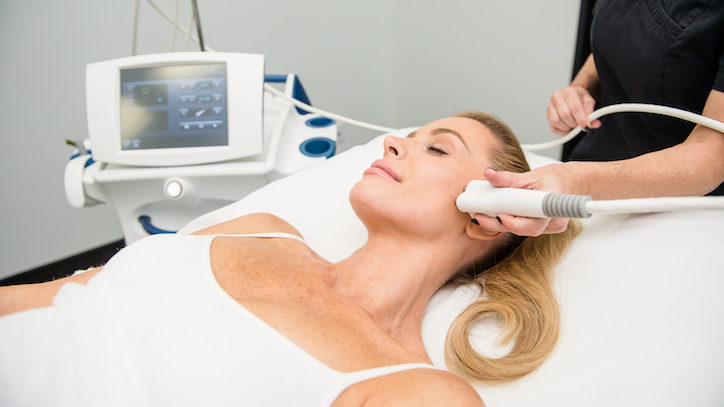Image Source – Google
Dealing with acne scars can be frustrating, but there are numerous effective treatments available to help diminish their appearance. Whether you have mild or severe acne scars, it's important to understand the different options so you can choose the best treatment for your skin.
Types of Acne Scars:
- Atrophic Scars: These scars appear as depressions in the skin and are commonly referred to as icepick, boxcar, or rolling scars.
- Hypertrophic Scars: These scars are raised, firm, and often red or dark in color. They occur when the body produces too much collagen during the healing process.
Effective Treatments:
1. Topical Treatments:
- Retinoids: These vitamin A derivatives can help promote cell turnover and reduce the appearance of acne scars.
- Vitamin C: This antioxidant can help brighten the skin and promote collagen production, which can improve the appearance of acne scars.
- Hydroquinone: This skin-lightening agent can help fade dark acne scars over time.
2. Chemical Peels:
Chemical peels involve applying a solution to the skin that exfoliates the top layer, revealing smoother, more even skin underneath. This can help improve the appearance of acne scars.
3. Microneedling:
Microneedling involves using a device with tiny needles to create micro-injuries in the skin. This stimulates collagen production and can help improve the appearance of acne scars over time.
4. Laser Therapy:
Laser therapy uses focused light energy to target and reduce the appearance of acne scars. This treatment can be tailored to the specific type of acne scars you have.
5. Dermal Fillers:
Dermal fillers can be injected into atrophic acne scars to help plump up the skin and make the scars less noticeable. This is a temporary solution that may need to be repeated over time.
6. Microdermabrasion:
Microdermabrasion is a non-invasive treatment that exfoliates the top layer of the skin, helping to improve the appearance of acne scars. It may require multiple sessions for optimal results.
7. Punch Excision:
Punch excision is a surgical procedure where the individual acne scars are removed and the surrounding skin is closed with sutures. This can be effective for deep, pitted acne scars.
8. Platelet-Rich Plasma (PRP) Therapy:
PRP therapy involves using the patient's own blood plasma, which is rich in growth factors, to stimulate collagen production and improve the appearance of acne scars.
9. Chemical Reconstruction of Skin Scars (CROSS):
CROSS involves applying a high concentration of trichloroacetic acid (TCA) directly to atrophic acne scars. This helps promote collagen production and improve the appearance of scars.
Prevention Tips:
- Avoid picking or popping acne lesions, as this can increase the risk of scarring.
- Use sunscreen daily to protect your skin from UV damage, which can worsen the appearance of acne scars.
- Maintain a consistent skincare routine with gentle, non-comedogenic products to prevent new breakouts.
- Seek professional treatment for acne early to prevent severe scarring.
Conclusion:
With the variety of effective treatments available, saying goodbye to acne scars is within reach for many individuals. By understanding the different options and working with a dermatologist to create a personalized treatment plan, you can achieve smoother, clearer skin and boost your confidence.

